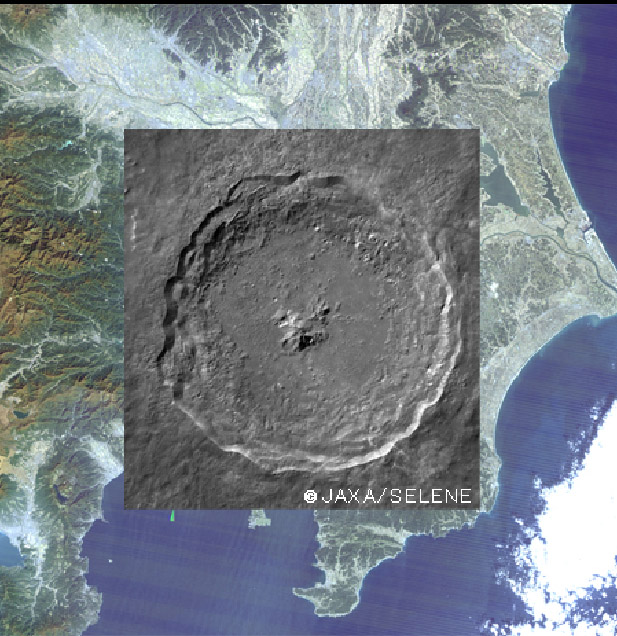February 18, 2018
Tycho & Tokyo
Originally published September 12, 2008

image from Kaguya/Selene Image Gallery
My son leaves today for a year of studying in Japan. In honor of his trip, LPOD features another one of the amazing images from Japan's Kaguya/Selene lunar orbiter. This is the famous image of Tycho superimposed, at the same scale, on a satellite image of the Tokyo area. On the Japanese page of the Kaguya Image Gallery you can see a Flash version where the Tycho image increases from high transparency to complete opacity, allowing quick comparisons of the two terrains. I often say that the floors of various lunar craters are big enough for a city to fit within (and I hope some day, one will), but metropolitan Tokyo would spill out, especially to the north. Just to the left of the bottom of the Tycho scene is a small curved lake that fills the southern half of one of Japan's largest volcanoes. This is Hakone Caldera, about 10 km in diameter. Like all large calderas on Earth, Hakone looks nothing like lunar craters. It is bizarre that so many of the old arguments that lunar craters were volcanoes paid so little attention to Earth's volcanoes! (But see Usu Caldera)!
Chuck Wood
Related Links
A more colorful view of Tokyo.
Yesterday's LPOD: Featureless? Ha!
Tomorrow's LPOD: Survival of the Fittest
COMMENTS?
Register, Log in, and join in the comments.



